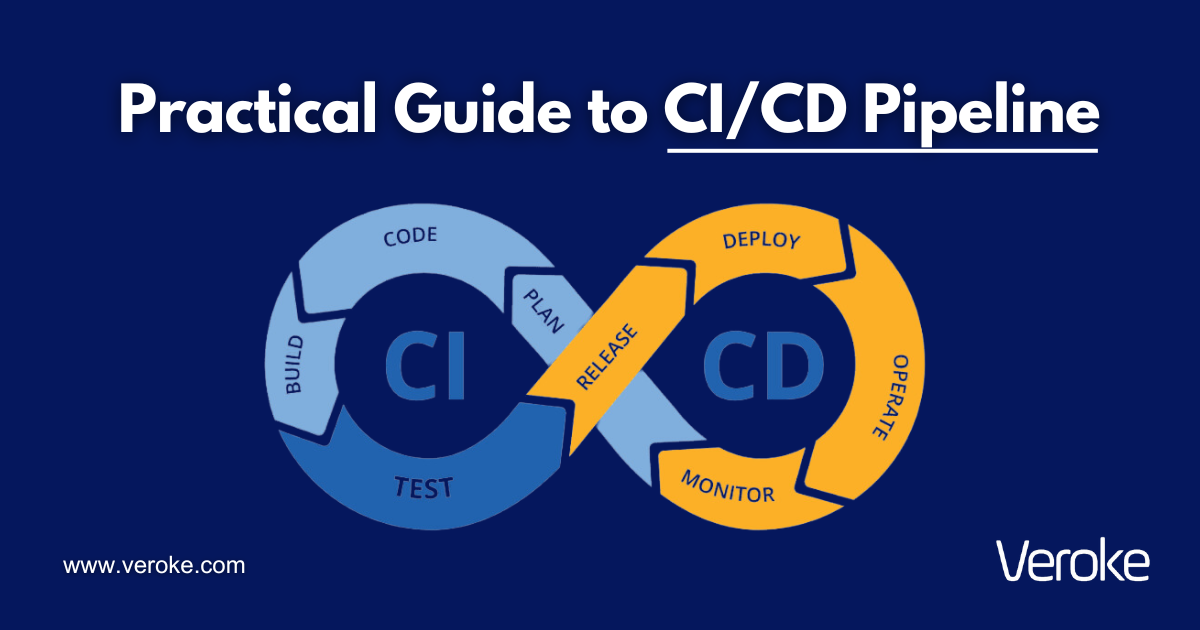Overview
Inside Saudi’s Tech Transformation
Get exclusive weekly insights into how the Kingdom is powering Vision 2030.
Talk to our experts.
The implementation of Continuous Integration/Continuous Deployment in software development can be really beneficial for organizations. It’s a software development methodology that aims to streamline the process of creating, testing, and delivering high-quality software. The core concept of CI/CD revolves around automating key tasks and ensuring frequent code integration and deployment. This approach emphasizes collaboration, efficiency, and agility.
In CI/CD, continuous integration refers to the practice of regularly merging code changes from multiple developers into a shared repository. This ensures that the codebase stays up-to-date and enables identifying and resolving integration issues early on.
On the other hand, continuous deployment extends the integration process by automating the release and deployment of the validated code to production environments. By automating these processes, this methodology reduces manual error risks, fosters faster feedback loops, and improves overall software quality.
In this post, you will learn everything about CI/CD, the key considerations for setting it up, the benefits it offers, some best CI/CD tools, and other key concepts on this topic.
Key Considerations for Setting Up a CI/CD Pipeline
The CI/CD pipeline is simply an agile DevOps workflow focused on a reliable and frequent software delivery process. When setting it up, several things should be taken into account to ensure a successful implementation.
One important factor to consider is the scalability of the pipeline. As the software development team grows and the number of projects increases, it is essential to have a pipeline that can cater the workload. This can be achieved by using scalable infrastructure resources such as cloud-based platforms or containerization technologies.
The second important thing is the integration of automated testing into the CI/CD pipeline. Using automated testing promotes a high-quality software development process as well as preventing any critical bugs or errors. This contains different types of tests, such as unit tests, integration tests, and end-to-end tests. In addition, the scope of the test should be comprehensive enough to catch any potential issues before releasing the software.
Phases of CI/CD Pipeline
The CI/CD pipeline operates through 4 different phases, collectively defining the development lifecycle and workflow:
-> Build: This initiates within the continuous integration process, involving the creation and compilation of code. Teams collaboratively advance from the source code, swiftly identifying any conflicts or issues as they integrate new code.
-> Test: At this stage, rigorous testing occurs. Automated tests, inherent to both continuous delivery and deployment, encompass a spectrum from integration and unit tests to regression tests.


-> Deliver: Here, a validated codebase progresses to the production environment. In continuous deployment, this phase is automated. Conversely, in continuous delivery, it requires developer endorsement before automation.
-> Deploy: Lastly, the changes are deployed, propelling the final product into production. This involves human approval before moving products or code into production from repositories. Continuous deployment streamlines this step by automating the deployment process.
Choosing the Right Tools
When it comes to choosing the right tools for CI/CD implementation, there are several things to consider.
First, it is important to assess the specific needs and requirements of your software development team. It involves determining the programming languages and frameworks you are working with, as well as any specific integrations or dependencies that may exist. With these factors, you can narrow down your choices and ensure that the selected tools align with the technical stack of your team.
Second, it is essential to evaluate the scalability and flexibility of the tools. As your software development project evolves, you may have to scale up your CI/CD pipeline to accommodate additional features or functionalities. It is therefore beneficial to choose tools that can adapt and grow seamlessly with your project over time. Tools like GitHub Actions, Travis CI, and GitLab are among the best available for CI/CD implementation.
Best Practices for CI/CD Workflow Management
To maximize efficiency, it is essential to follow some of the best workflow practices.
The first step is to establish a clear and well-defined process. This includes identifying the different stages of the workflow, such as code merging, testing, and deployment, and documenting the steps involved. With a definite process, teams will be able to understand their roles and responsibilities.
Plus, automation plays a key role in effective CI/CD workflow management. Automating tasks such as code compilation, testing, and deployment helps minimize manual errors and ensures consistency in the process. Utilizing tools like Jenkins or GitLab CI/CD can assist in automating these tasks, enabling developers to focus more on coding and less on repetitive processes
Ensuring Code Quality and Test Coverage in CI/CD
Continuous integration and continuous deployment pipelines make it imperative to ensure comprehensive test coverage and to validate the code quality. One of the best ways to maintain code quality is through the use of static code analysis tools. These tools help identify potential bugs, coding standards violations, and other code quality issues early in the development process. This way, developers can receive immediate feedback on code quality, allowing them to address any issues on time.
Moreover, automated testing plays a crucial role in maintaining test coverage. The CI/CD pipeline runs unit, integration, and regression tests automatically on any changes to the codebase to prevent unexpected problems. This helps in identifying and fixing bugs early on, reducing the chances of deploying faulty code into production. Software developed this way not only eliminates potential bugs and coding issues but also increases confidence in the software’s reliability and stability.
Overcoming Challenges and Pitfalls in CI/CD Adoption
Adopting CI/CD methodologies can be challenging because of resistance to change. It may be difficult to transition from traditional waterfall development models to CI/CD when teams are used to waterfall development or manual deployment practices. The fear of disruption and the unfamiliarity with automated workflows can create resistance within the team, which will eventually lead to delays in adoption.
In addition to that, CI/CD requires integration with various tools, such as version control systems, build servers, and deployment platforms. Version control systems are also significant in managing the workflow. With the help of a robust version control system, teams can easily track changes, collaborate on code, and roll back to previous versions if needed.
When the software evolves and new features are added, the CI/CD pipeline must be constantly updated and maintained. This requires careful planning and ongoing coordination among team members to overcome these challenges and successfully implement CI/CD in software development.
Future Trends and Innovations in CI/CD Methodologies
In the continuously evolving world of software development, continuous integration, and continuous deployment CI/CD methodologies continue to adapt and grow. As technology advances and new tools emerge, organizations need to stay updated with the latest trends and innovations.
One of the key trends in CI/CD methodologies is the increased adoption of containerization and orchestration technologies. Containers, such as Docker or Microsoft Azure, have gained popularity due to their ability to package applications and their dependencies into a portable unit. This allows developers to create consistent environments for testing and deployment, resulting in faster and more reliable CI/CD pipelines. In addition, orchestrators like Kubernetes provide powerful management capabilities for these containers, enabling seamless scaling and automation.
Another emerging trend in CI/CD methodologies is the integration of artificial intelligence (AI) and machine learning (ML) techniques. AI and ML can be leveraged to automate tasks such as code reviews, test coverage analysis, and build optimizations. Through the use of these technologies, organizations can further streamline and improve their CI/CD processes, reduce human error, and cut down on overall costs. In the future, AI and ML will increasingly be integrated into CI/CD pipelines, enhancing quality and productivity.
If you’re looking to revolutionize your business with optimized DevOps CI/CD pipelines? Connect with our team at Veroke today. We understand that every business has its own journey and challenges. That’s why we offer tailor-made DevOps solutions, crafted to fit your specific needs and drive your success.
Want to know more about our service.
Inside Saudi’s Tech Transformation
Get exclusive weekly insights into how the Kingdom is powering Vision 2030.
Transform your Ideas into a Digital Reality
Get scalable, customized solutions for your business.




